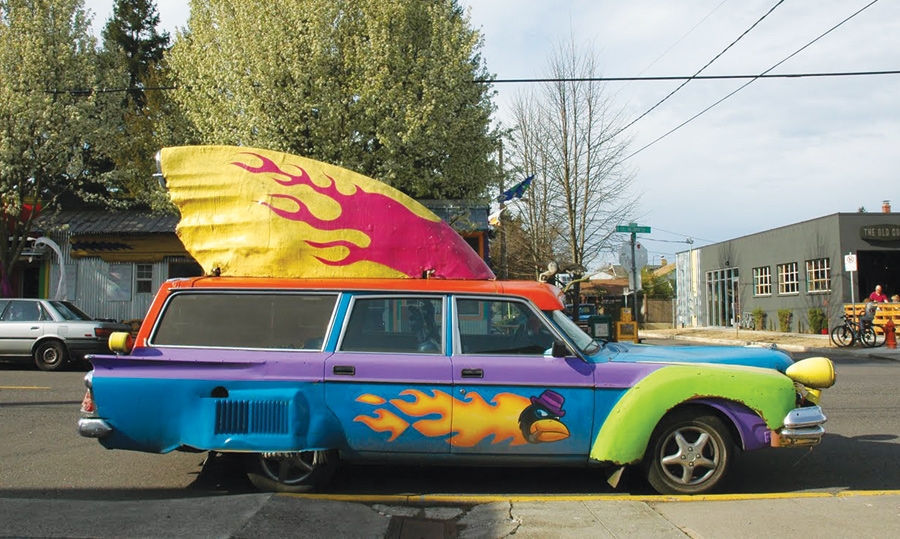
Many years ago, I was considering buying a Mercedes 230SL and called Mercedes guru, SCM contributor and collector Alex Dearborn to ask for his advice. I told him the car was straight enough, a little scruffy in and out, would need a torn swing-axle boot replaced, had a 4-speed and both tops. At that time, the price of $18,000 was about right.
Alex was direct in his response. “How much imperfection can you stand?” he said. “You’ll need to fix anything mechanical that creates safety problems, but after that it’s all up to you.”
I decided that if the car were mine, I’d be unhappy with the state of the upholstery and the paint, and I didn’t want another restoration project. So I passed.
I’ve thought about that many times, and especially the past few weeks as I’ve been in the hunt to fill the spaces in the SCM/ACC garage after the ’64 Nova wagon and Isetta went away.
I’ve been through a fair number of cars in the past few years — some bought thoughtfully after much consideration and consultation with marque experts, and others acquired thoughtlessly from online listings after one too many glasses of wine. If a computer could speak, it would say, “Just one more keystroke and this car can be yours!”
I’ve looked at a few Alfa Duettos, Morgans, Healey 3000s, Bugeyes and MGAs. In my weekly SCM newsletter blog, I’ve discussed why I’ve considered each of these cars, and I have appreciated your fervent and thoughtful responses.
In the end, I’ve found there are two primary factors to consider when buying a collector car:
First, follow Alex’s mantra of just how imperfect a car can you live with.
Second, how correct are the bones of the car you are considering?
You can’t bring back a wrong car
In the budget range we are talking about here — $15,000 to $50,000, depending on the car — you don’t have the latitude to pay too much for a car with massive needs without instantly going so far underwater that you’d quickly pass Captain Nemo and the Nautilus on your way down.
Above all, a car has to have good panel fit. In a perfect world, it has never been rusty or hit. Some of the cars I have looked at have exquisite paint — but questionable door, hood and trunk alignment. On Duettos, the shape of the little bump on the nose above the grille can reveal volumes. I have almost never seen one that has been properly repaired, and that feature has become a key factor in deciding which cars make the final cut.
It doesn’t matter what kind of car I’m looking at; if the gaps and general lines of the body are suspect, I walk away.
Do the numbers match?
Mechanical correctness is a completely different issue, and it’s a personal matter. As I am an Alfa fanatic, it is very important to me that the Duetto I am looking for have its original 1,600-cc engine.
With 15,047 Duettos built, they are not nearly as rare as their predecessor, the Giulia Spider Veloce, of which only 1,091 were constructed. So there are always a few to choose from, and I can be picky. I want a car that is stock and complete, even if disheveled and unloved.
With an MGA or a Bugeye, it’s a different matter when it comes to originality of the drivetrain. I’m interested in these models as my first car was a Bugeye, and my second an MGA.
As I don’t have the same degree of affection for either of these English cars as I do Alfas, it can be a plus for me if they’ve been nicely upgraded to a later, larger engine.
Would I be terrified to open the hood at an MGA gathering if I had a B engine in it, coupled to a transplanted 5-speed? I don’t think so. The B engine is a direct descendant of the A and the looks are similar.
With the Bugeye, I haven’t found anyone who objects to replacing the 948-cc engine with a 1,275-cc unit — or upgrading the front brakes to discs. There simply doesn’t seem to be the purist factor at work here that there is in more expensive cars.
Cheap and cheerful
The large numbers of these cars built (48,987 for the Sprite and nearly 100,000 for the MG in all variants) means that there will always be plenty of cars to choose from — and that they will never become ultra-expensive.
Further, there will always be “correct” examples available, so if someone is a fanatic about originality, they will be able to find an example that suits their needs.
The decision
So, every day I sift through emails with pictures and descriptions, and weigh each car according to my requirements, its condition and price. I’ve also come to realize that I can’t buy a car that has been color changed, or with bad panel fit or rust issues — even if it is attractively priced. Every time I go into the garage I will kick myself and wonder how much it will take to make the car right. That amount will always be too much, given the underlying value of the car. So I’ve decided on the degree of imperfection I can stand.
Keep these things in mind when you go on your hunt. Decide just how perfect or imperfect a car you need, and only buy something solid with no stories. No matter what kind of car you are looking at, if you follow these parameters, you have a good chance of ending up with a car that makes you smile.
You don’t want one that makes you wish you hadn’t had that last glass of wine before your final bid. Trust me, I know. ♦